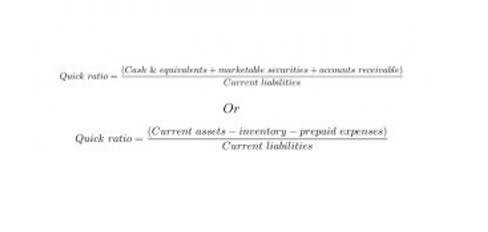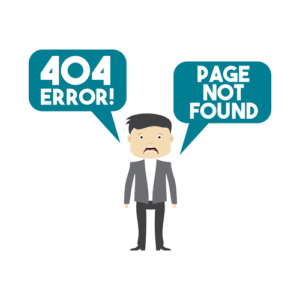
He has been the CFO or controller of both small and medium sized companies and has run small businesses of his own. He has been a manager and an auditor with Deloitte, a big 4 accountancy firm, and holds a degree from Loughborough University. As an example, suppose a business has a product in inventory which cost 1,000, and has decided that due to a decline in the market for the product, its value is now estimated to be worth 700. He is a certified public accountant, graduated summa cum laude with a Bachelor of Arts in business administration and has been writing since 1998. His career includes public company auditing and work with the campus recruiting inventory obsolescence reserve team for his alma mater. Modern inventory software includes built-in safeguards that reduce manipulation risk.
- However, this might still result in a loss due to the difference between the cost and sales revenue.
- Companies use Generally Accepted Accounting Principles (GAAP) when dealing with obsolete inventory.
- An obsolescence reserve is created when a company determines that specific items, or a category of items, in its inventory are worth less than their book value.
- The presence or absence of a reserve can be a big deal when a company has a large amount of inventory on hand and it’s not doing a good job of managing it.
- A company estimates how much of its inventory will “go bad” based on its past experience, its assessment of current industry conditions, and its knowledge of customer tastes.
- Accounting software also ensures that assumptions used in a company’s books are applied consistently from year to year.
Related Best Practices

Later, when there is an identifiable reduction in the valuation of the inventory, reduce the amount of the inventory reserve with a debit, and credit the inventory asset account for the same amount. Thus, the expense is recognized prior to the identification of a specific inventory issue, which may not occur for some time. First, it helps you measure the true value of your inventory and avoid overstating your assets and income. Second, it helps you plan for future inventory purchases and avoid excess or insufficient stock levels. Third, it helps you comply with the accounting standards and tax regulations that require you to report your inventory at the lower of cost or market value. Fourth, it helps you identify and address the root causes of inventory obsolescence and improve your inventory management practices.

Financial Literacy Matters: Here’s How to Boost Yours
Since these goods cannot be used, their cost is either written off or written down. A https://extensionpublications.com/ng/how-to-calculate-the-change-in-working-capital/ write off completely eliminates the inventory asset from the accounting records, while a write down reduces the amount of the recorded asset to the price at which it can still be sold. To calculate an inventory reserve, review historical data to learn what percentage of inventory is left unsold.
What Are the Audit Processes? 7 Key Processes You Should Know
The provision for obsolete inventory account functions as a contra asset account, reducing the net reported value of an inventory’s carrying amount on the balance sheet. The primary purpose of this account is to account for the difference between the original cost recorded for the inventory and its current market value or book value. This adjustment is crucial in ensuring that reported financial statements reflect an accurate representation of a company’s inventory position. An inventory reserve is established with a credit entry to the contra-asset account (often called “Allowance for Obsolete Inventory” or similar), which reduces the value of inventory on the balance sheet.
- Proper documentation of physical disposal should accompany the accounting entry for audit purposes.
- The company will try its best to minimize the inventory obsolete cost as it is the cost that does not provide any benefit to the customers or company.
- This process aligns with Generally Accepted Accounting Principles (GAAP) by preventing the overstatement of assets and matching expenses to revenues.
- However, the company already record inventory write down $ 5,000 for the whole inventory, which already impacts income statement.
- Additional entries may be needed besides the ones noted here, depending upon the nature of a company’s production system and the goods being produced and sold.
These systems automatically flag slow-moving inventory, calculate suggested reserves based on policy rules, and create audit trails of all adjustments. For comprehensive understanding of how costs affect different revenue streams, explore our detailed guide on cost of sales. Let’s assume that a business is engaged in electronics production and has an inventory of electronic components that have been in stock for over a year. The business is now concerned that there may be some inventory shrinkage due to theft or damage. Let’s assume that a business is engaged in clothing production and has an inventory of t-shirts that have been in stock for over six months.
Regular recalculation using the weighted average inventory method ensures your inventory valuation methods remain accurate. While sometimes used interchangeably, this typically refers to physical inventory set aside for emergencies, whereas an inventory reserve definition properly refers to the accounting provision. The review may include an inventory inspection to determine its condition and an assessment of the market demand for the product.
- When a company creates an inventory reserve, it sets aside money to cover the cost of any inventory that is not sold.
- This reduces the net reported value of inventory on the balance sheet without removing the items from the books entirely.
- For example, if a company has historically written off 2% of its inventory each year, it might apply a 2% reserve to its current total inventory value.
- The offset is an expense, which can be to the general cost of goods sold account, or a special expense account that’s just for obsolete inventory.
- Boosting the inventory reserve will result in an expense on the income statement that artificially reduces income and taxes.
- Inventory management software can help reveal changing inventory forecasts or trends that require adjustments to existing inventory reserves.
If you are operating a production facility, then the warehouse staff will pick raw materials from stock and shift it to Suspense Account the production floor, possibly by job number. This calls for another journal entry to officially shift the goods into the work-in-process account, which is shown below. If the production process is short, it may be easier to shift the cost of raw materials straight into the finished goods account, rather than the work-in-process account.

Inventory reserve vs. inventory write-off
On 31 Mar 202X, the inventory balance is $ 500,000, and management estimate inventory write-down of $ 5,000 which may cause by various reasons such as obsolete and damage. Inventory on hand needs to present at a lower cost or net realizable value which is conservative accounting. At some point, a company will have to concede that they have inventory that can’t be sold. Such would be the case with a pallet of rotten tomatoes in a grocer’s warehouse, for example, or a stock of outdated computer components. When this happens, the company “writes off” those items, meaning it takes them off the books, and the company absorbs the costs. Inventory reserve is an estimation of future inventory spoilage based on the company’s past experiences.

Under these frameworks, inventory must be reported at the lower of cost or net realizable value, necessitating adjustments for obsolescence. Once identified, inventory must be classified based on factors like age, condition, and market demand. Classification helps determine the appropriate accounting treatment and financial reporting. Learn how to identify, account for, and manage obsolete inventory, including its impact on financial statements and tax implications. This contra-asset approach preserves the original inventory cost while adjusting the carrying value to reflect current market conditions. Financial statement footnotes must disclose significant reserve adjustments and the methodology used to determine reserve amounts.
Purpose and Importance of Inventory Reserves
In order to make any of these review systems work, it is necessary to create policies and procedures as well as ongoing scheduled review dates. By doing so, there is a strong likelihood that obsolescence reviews will become a regular part of a company’s activities. Another Board policy should state that management will actively seek out and dispose of work-in-process or finished goods with an unacceptable quality level. By doing so, goods are kept from being stored in the warehouse in the first place.


No comment yet, add your voice below!